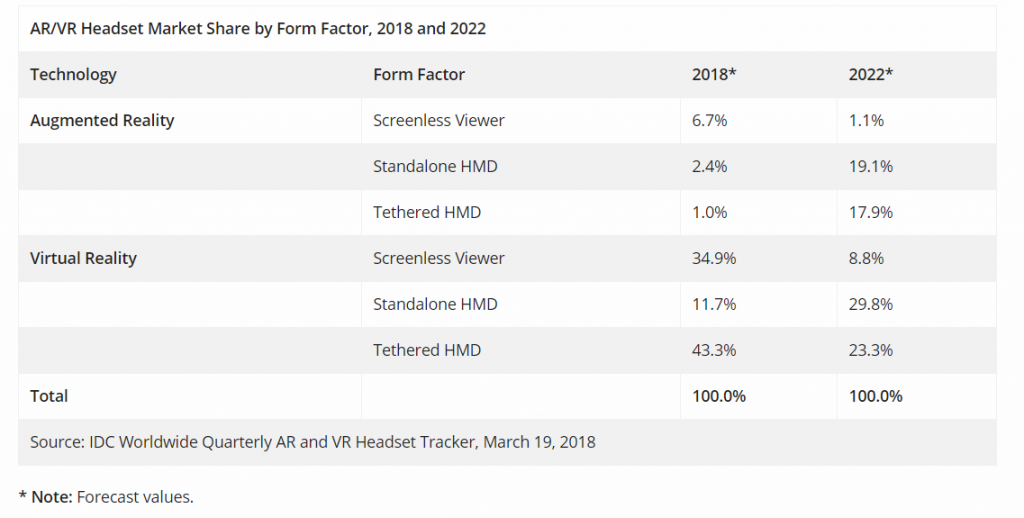The year 2017 was not a spectacular one in terms of sales of augmented/ virtual reality headsets, but starting with this year and until 2022 this market sector is predicted to experience a steady growth. This is the main forecast from Worldwide Quarterly Augmented and Virtual Reality Headset Tracker report, published by the International Data Corporation (IDC), which specializes in market intelligence and advisory services for the consumer technology, telecommunications and information technology sectors.
A Significant Growth in Market Share for VR and AR Devices
According to the forecasts made by IDC, the AR/VR headsets market will experience a compound annual growth rate (CAGR) of 52.5% in the five-year period until 2022. In terms of the number of sold units, IDC made two key estimates:
- In 2018, up to 12.4 million augmented/virtual reality headsets will be sold, a massive 48.5% increase compared to 2017.
- By 2022, total AR/VR headsets sales will go up to 68.9 million units.
“There has been a maturation of content and delivery as top-tier content providers enter the AR and VR space. Meanwhile, on the hardware side, numerous vendors are experimenting with new financing options and different revenue models to make the headsets, along with the accompanying hardware and software, more accessible to consumers and enterprises alike,” explained Jitesh Ubrani, a senior researcher analyst at IDC Mobile Device Trackers about this optimistic forecast.
New Manufacturers and New Business Use–the Key Reasons for AR/VR Market Growth
At a first glance, these forecasts seem overly optimistic. In truth, they are in line with the current state of the AR/VR industry. The big players are constantly joined by innovative startups which improve augmented/virtual reality headsets. From the heavy, expensive and difficult to wear prototypes of a few years ago, we are now seeing an explosion of comfortable, lightweight and affordable headsets, or smartglasses, some of which look exactly like regular glasses.
At the same time, more and more industries are discovering and embracing new technologies. Augmented reality and virtual reality headsets and applications are currently present in hospitals, schools, police academies, architects’ offices and car manufacturing facilities. And the trend will continue, with more business and industry sectors joining the wave of change.
Forecasts by Device Type

Source: IDC
Augmented reality headsets will expect the most significant growth and will dominate the global AR/VR market of 2022 with 97% of device sales. This growth is prompted, on one hand, by the continually decreasing price per unit and the diversification of smartglass models, with new screenless viewers and standalone and tethered devices available. Speaking of lower prices, the top manufacturers who started slashing the price of their devices are Acer, Dell, Lenovo and HP.
IDC forecasts the following market share percentages per type of device at the beginning of the forecast period and at the end:
- Screenless viewer: 6.7% in 2018 and 1.1% in 2022
- Standalone headset: 2.4% in 2018 and 19.1% in 2022
- Tethered headset: 1.0% in 2018 and 17.9% in 2022
Virtual reality headsets, on the other hand, will experience a significant drop in the demand for screenless viewer and tethered devices, and moderate growth for standalone headsets:
- Screenless viewer: 34.9% in 2018 and 8.8% in 2022
- Standalone headset: 11.7% in 2018 and 29.8% in 2022
- Tethered headset: 43.3% in 2018 and 23.3% in 2022




